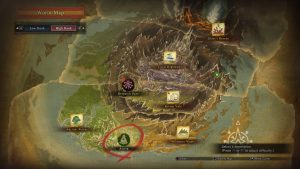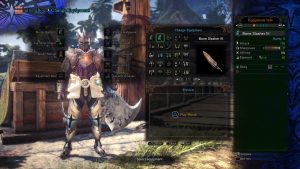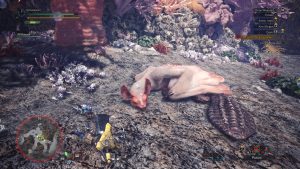BY TYLER REYNOLDS
The Monster Hunter franchise will probably be an unfamiliar one to Western audiences. Only until recently has the franchise started to get more mainstream appeal, thanks to a line of portable versions, and word of mouth. The latest to be released is Monster Hunter: World, a title that carries on the legacy of previous games in the franchise.
Monster Hunter: World is the eighth game in the mainline Monster Hunter franchise and the first time the game has been available on a home console, rather than a portable device since the original Monster Hunter: Tri in 2009.

The core gameplay of the Monster Hunter franchise follows a simple formula: pick a quest, go out and hunt or capture monster, build better armor and weapons from monster parts, then repeat.
In addition to the materials needed from monsters, many items must be gathered in each map in order to upgrade weapons and armour and also to combine to create new items that players can use while out on hunts. While there are some items that players can avoid using like temporary stat boosters, others are necessary like health recovering potions and items that remove negative status effects.In some missions players will be tasked with capturing monsters alive instead of killing them.
In past games rewards would differ greatly between killing and capturing monsters, making one method more advantageous over the other. Now rewards are evened out, giving players more of a choice as to how they want to take down a monster. Running low on health items in a tough fight? Go for a capture to end a fight faster. Fighting an easy monster but running low on supplies? Let the fight go on longer and go for a kill.
The maps in Monster Hunter: World are gorgeous and feel like actual ecosystems that these creatures live in. Monsters both massive and small have their own behaviours and travel around each map. Predators actively hunt some of the smaller, weaker creatures and can even fight each other when two or more enter the same area. This can happen even when players are fighting a single monster and it adds realism to its world.

Although some systems have been made simpler for newer players such as the weapon upgrade trees and monster tracking, the game still refuses to let players know of others. Some of these are important much later in the game, but some such as affinity, a stat based off of how often your attacks will be critical attacks aren’t mentioned at all.
The main stories of Monster Hunter games have always felt like an excuse to introduce players to new monsters instead of telling a cohesive story. While Monster Hunter: World doesn’t do much to change this, but it does put in an effort to engage players into its world instead of just the monsters that live in it. It also feels like the game introduces players to higher difficulty monsters a little sooner than they should in a few sections.

Monster Hunter: World has 49 monsters in total. Of the 49, 30 of them are new and 19 return. This makes World one of the games with the smallest number of monsters in the franchise. This makes the endgame feel shorter than it should and adds a bit of monotony only hunting the few final monsters at the end of the game.
Despite a few flaws Monster Hunter: World is a fantastic game that’s easy to lose hours into. The slight simplifications made make it easy to jump into for a first time player, while still holding the same depth that keep veterans coming back.
